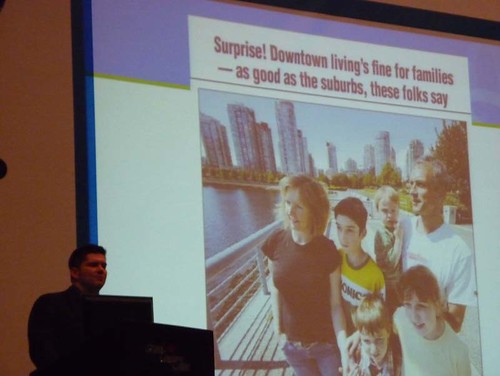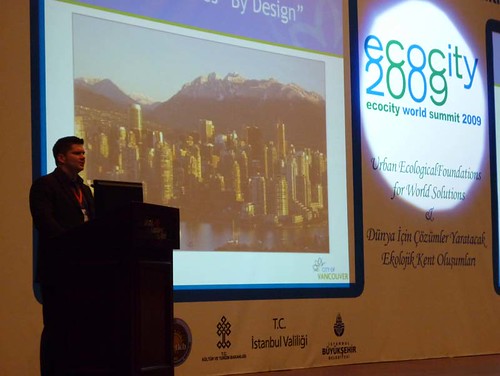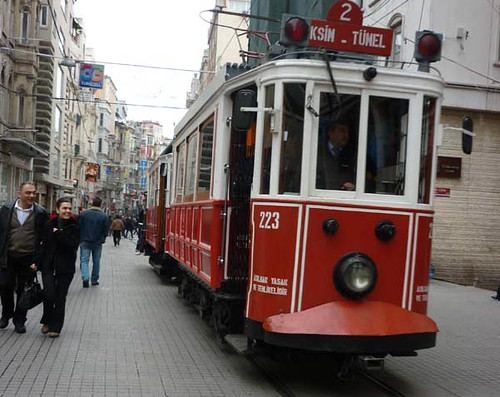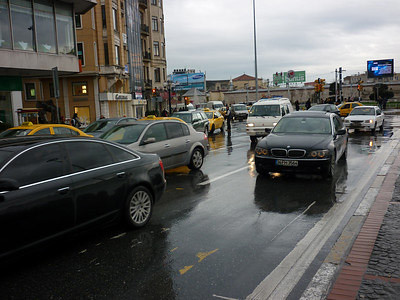Any fool can make things bigger, more complex, and more violent. It takes a touch of genius — and a lot of courage — to move in the opposite direction.
– Albert Einstein
City planners aren’t usually on the list of people we associate with paradigm-shifting embers of wisdom. Spiritual leaders, artists, and philosophers — yes — they have sparked our collective imagination and shaped the course of society throughout history. While Be the change you wish to see in the world and I have a Dream will forever be guiding lights in our journey through a complex and often confusing world, it’s clear that each generation brings with it the need for new symbols and archetypes in response to the struggles of its time.
It was at last month’s Ecocity World Summit in Istanbul that I thought I’d heard a concept expressed that reflects and encompasses so much of the millennial Zeitgeist, as a theme to embrace as well as aspire to: The Power of Nearness
It’s slowly but surely seeping into our collective consciousness that the road to reversing climate change leads through cities. Cities cover less than 1% of the earth’s surface but are responsible for up to 75% of the world’s greenhouse gas emissions. With almost 60% of the world’s population and growing living in cities it is high time to inspire new story lines that shift our attention to the built environment.
While Ecocity 2009 presented a wide range of nuts and bolts programs and strategies by planners and policy makers from around the world, the most hopeful moments came whenever speakers were able to connect their planning ideas not only with why it’s so important to rethink our cities but to the idea that high density living is about more than just reducing carbon: If designed right, cities can connect us back to nature, to each other, to our shared humanity.
For three days I was busy listening to speakers, facilitating breakout sessions, and interviewing visionaries. After reading through my notes and listening to my transcripts I realized there’s no way I could do justice to all the compelling voices and ideas espoused at the conference in one diary. Instead, I’ll be sprinkling this smorgasbord of urban foresight from Istanbul throughout various posts in the coming weeks and months. But what better way to start than with Brent Toderian, Director of Planning for the City of Vancouver, Canada, who not only gave us a great unifying theme to wrap our minds around but showed how to transform a strong vision into bold and concrete action.
 THE POWER OF NEARNESS THE POWER OF NEARNESS
Brent Toderian knows about the power of bold thinking and changing conventional wisdom as he’s been instrumental in implementing the Vancouver EcoDensity initiative recently adopted by his city. EcoDensity is a Charter that commits the City of Vancouver and its citizens to address change more proactively and adapt the city and its way of life to meet the challenges we all face. Based on the premise that strategically located, sustainably designed density can reduce the city’s ecological footprint while making Vancouver more livable and affordable, Toderian said that they are now reviewing every existing rule in their planning department in order to identify possible carbon reductions. |
This theme resonated so strongly with me because it compresses the complexity of the global ecological crisis into one powerful truth: There’s nothing to fear from living closer to one another; just the opposite — we can and will gain from it. It’s like the Yes We Can of climate change, impressing upon people that cities don’t have to be the drab and noisy concrete jungles branded into our collective consciousness from a century of unimaginative city planning. It is up to a new generation of planners and architects to change this prevailing perception by showing that healthy cities are living, breathing ecosystems. Inverting the transportation pyramid as we currently know it is the structural cornerstone for creating that mental shift, and Mr. Toderian laid it out in very simple terms.
| DENSITY DONE WELL
Density done well is the key to livability/sustainability, and an integral part of this philosophy is to prioritize your transportation infrastructure in the following order: 1… WALKING 2… Cycling 3… Public Transit 4… cars
|
One of the big hurdles not only in making our cities more livable but addressing a whole range of ecological problems including climate change is an economic system that is based on perpetual growth and lack of accountability for “externalities.” You know you’re living on borrowed time and wealth when things like resource depletion, loss of biodiversity, and toxic emissions are not proportionally factored into your economic equation. While the concept of “We don’t let the market dictate our planning” sounds like a Bolshevik plot to free-market fetishists south of the border, it was refreshing to hear an English-speaking decision maker utter these words as if he was ordering eggs for breakfast.
 DON’T LET THE MARKET DICTATE PLANNING DON’T LET THE MARKET DICTATE PLANNING
“We don’t let the market dictate our planning,” says Toderian, a strategy that enables the city to pour money into the kind of projects that make urban living desirable, like public art and cultural facilities. By encouraging candid, city-wide dialogue around an evolving urbanism, with bold opportunities around sustainability, creativity and architectural risk taking, Vancouver really sets an example for other car-centric North American cities on how to engage their residents in the process of enacting the structural change that is needed to transition into a low-carbon economy and experience the power of nearness. |
The way to think about it is that the market is like a toddler: He wants everything and he wants it now. The idea of a “free” market is like letting your toddler do as he wishes: Pull twenty books from the shelf, eat a pound of candy, run into the street. But we all know that just to survive the toddler needs basic supervision. If we want him to keep his teeth and grow up to be a healthy adult, we have to feed him vegetables even though he wants candy. And leaving everything sprawled out on the floor eventually hampers everyone’s creativity because you’re wasting energy digging through the chaos.
Or to put it into a city planning context:
What’s going to encourage more innovation and creativity — urban sprawl and tract housing development enabled by free market forces based on mid-20th century ideals and economic models, or a vibrant and verdant inner city driven by plans that put community, the arts, and long-term economic/ecological health before short-term profits?
What I love about Vancouver’s model is that it combines the strengths of the market with the strengths of good planning and basic ecological principles. It recognizes that building a dense urban ecosystem that appeals to our basic human instincts of wanting to connect with nature and with each other is an automatic boost to small business and local commerce. Rather than presenting ecological elements in city planning as sacrifices or restrictions, this forward-thinking approach transcends old ideological battle lines by showing how rich and fulfilling city life can be when vital services and cultural offerings are within walking or biking distance.
While each city has its own unique geographic, social and political challenges, the appeal to our most basic human needs and joys is a universal and unifying principle in our endeavor to transition to a low carbon world. On the surface, the Power of Nearness is a more relevant literal motto for a sprawling North American metropolis like Vancouver than dense and overpopulated megacities like Mumbai or Istanbul. But on a more visceral level I found it to be the perfect rallying cry for everyone present at Ecocity 2009: From Auckland to Freiburg, from Kathmandu to Rio, from Seoul to San Francisco, it’s clear to everyone that the ways in which we manage to live close to each other will determine our resilience and ability to adapt to dwindling natural resources and climate change.












I wish this was on the front pages of the world’s largest city newspapers.
Some day soon, Pam. I’m working on it 😉
[…] city plan. Brent Toderian, Director of Planning for the City of Vancouver, Canada, also calls it “The Power of Nearness,” expressing a changing shift in perception about urban living. While a century of unimaginative […]
[…] be quite enriching. Brent Toderian, Vancouver’s former Director of Planning, aptly coins it The Power of Nearness, and a look across the bridge gives voice to the idea that living close together can be quite […]